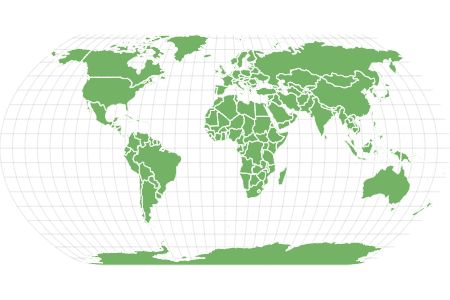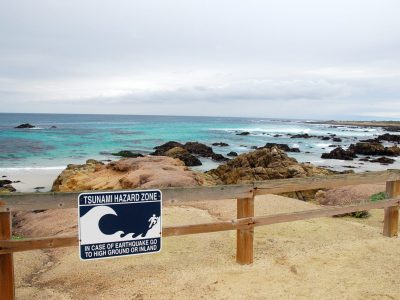Emit red light to hunt via bioluminescent photophores
Advertisement
Stoplight Loosejaw Scientific Classification
Read our Complete Guide to Classification of Animals.
Stoplight Loosejaw Conservation Status
Stoplight Loosejaw Facts
- Prey
- Zooplankton, shrimp, krill, fish
- Main Prey
- Copepods
- Name Of Young
- Larvae
- Group Behavior
- Solitary
- Fun Fact
- Emit red light to hunt via bioluminescent photophores
- Biggest Threat
- Predators, pollution, climate change
- Most Distinctive Feature
- Red, green, and blue photophores
- Distinctive Feature
- Large, fang-like teeth
- Other Name(s)
- Rat-trap fish
- Average Spawn Size
- Unknown
- Habitat
- 1,700-13,000 feet below sea level
- Predators
- Other stomiids
- Diet
- Carnivore
- Lifestyle
- Solitary
- Favorite Food
- Zooplankton, copepods
- Special Features
- Wide, open jaw structure
- Location
- Worldwide except the Arctic and Subantarctic
Stoplight Loosejaw Physical Characteristics
- Color
- Grey
- Black
- Skin Type
- Permeable
- Lifespan
- Unknown
- Length
- Up to 30 centimeters
- Age of Sexual Maturity
- Unknown
- Venomous
- No
- Aggression
- Medium
View all of the Stoplight Loosejaw images!
Summary
One of nature’s sneakiest hunters, stoplight loosejaws belong to the dragonfish family Stomiidae. They get their name from the light-producing organs below each eye that emit green and red light like a stoplight. Given that most deep-sea creatures cannot see red light waves, this gives stoplight loosejaws a huge advantage when hunting for prey and also helps them to avoid predators.
5 Stoplight Loosejaw Facts
- Stoplight loosejaws possess bioluminescent photophores beneath the eyes that emit green and red light, hence their name.
- You can find them in water depths from 1,700 to 13,000 feet.
- Unlike other dragonfishes, the stoplight loosejaw does not migrate to the surface to feed, spending most of its life at lower depths.
- The stoplight loosejaw’s lower jaw measures nearly one-quarter of its total length and tends to gape open most of the time.
- Despite their large mouths and teeth, these fish primarily feed on zooplankton, while a small amount of shrimp, krill, and fish round out their diet.
Classification and Scientific name
Stoplight loosejaws belong to the dragonfish family Stomiidae. Their genus, Malacosteus, derives from the Greek words malakos, meaning “soft,” and osteon, meaning “bone.” Scientists disagree on the number of species within the genus, with some arguing that there are two while others contend there are three species. The species is M. niger. They get their common name from two distinct physical features. First, they have two bioluminescent photophores below each eye that produce green and red light, making them look similar to a stoplight. Second, they have wide, gaping mouths that hang open loosely. Some people also refer to them as “rat-trap fish” due to how their lower jaws gape open.
Stoplight Loosejaw Appearance
As their family name implies, stoplight loosejaws look similar to aquatic dragons. They have elongated bodies with short, rounded snouts and large eyes. On average, they measure approximately 1 foot long. The dorsal and anal fins are placed near the rear of the body and contain around 20 rays each. Like other stomiid and deep-sea fish, they possess thin, scaleless skin and appear predominantly black or gray. One of their most characteristic features is their lower jaw, which measures approximately one-quarter of their body length. The jaw tends to hang open most of the time, and they have one of the widest gapes of any fish species. They have large, fang-like teeth positioned near the front of the jaw and several rows of pharyngeal teeth that help move food down the throat.
These fish possess bioluminescent photophores beneath their eyes. The top, teardrop-shaped photophore emits red light, while the bottom, ovoid photophore emits green light. These red and green lights resemble traffic lights, hence their name. They also possess several rows of blue photophores along each side of the body and a scattering of white luminous tissue around the head and body.

Stoplight loosejaws possess bioluminescent photophores beneath their eyes.
©NOAA Northeast Fisheries Science Center/Public Domain – License
Distribution, Population, and Habitat
You can find stoplight loosejaws all over the world except for the coldest regions of the Arctic Ocean and Subantarctic. They spend most of their lives within the Mesopelagic and Bathypelagic Zones, known as the Twilight and Midnight Zones, respectively. Their range extends from 1,700 to 13,000 feet below the surface. Unlike some other stomiids, no evidence exists to suggest that they make vertical migrations to hunt for food. This likely means that they spend the majority of their lives around the same depth.
Stoplight Loosejaw Predators and Prey
Within their habitat, stoplight loosejaws are apex predators. They have few natural predators once they fully mature, although juveniles most likely contend with other predators. As juveniles, stoplight loosejaws biggest threat comes from adult loosejaws, given that they are the only other animals that can see the red bioluminescent light they emit from their photophores. In addition, they are also threatened by human activity, including fishing, pollution, and climate change. That said, these fish are not caught for their meat.
Stoplight loosejaws are carnivores that hunt using ambush tactics. Despite their relatively large size, their diet primarily consists of tiny organisms like zooplankton. In particular, they mainly eat tiny crustaceans like copepods, although they also eat a limited amount of shrimp, krill, and fish. Many deep-sea organisms cannot see red light, which gives stoplight loosejaws a distinct advantage. They use their red photophores like searchlights to look for food while also appearing practically invisible to their prey. Once they detect the presence of something to eat, they swing their heads forward like a piston. Their wide jaws can snap shut extremely quickly, and their sharp, fang-like teeth grab onto and prevent prey from escaping.
Reproduction and Lifespan
Little is known about the reproduction habits of stoplight loosejaws, given that they spend the majority of their lives deep below the surface. Scientists aren’t certain how long they live, nor at what age they sexually mature. Some suspect that the females lay their eggs in open water for the males to fertilize later. Further research is required to learn about their average spawn size, incubation times, and the development stages juveniles take as they mature into adults.
Stoplight Loosejaw in food and cooking
Presently, stoplight loosejaws are not used in food or cooking. Their gelatinous flesh is not particularly appetizing, and most specimens caught by fishers are simply a by-product of trawling with deep nets.
Stoplight Loosejaw Population
Not much is known about the population levels of stoplight loosejaws around the world. That said, it’s safe to guess that they are fairly common and widespread. Fishers have found stoplight loosejaws all over the world in all but the coldest of waters. This means that they are highly adaptable and can thrive in various environments. Also, because they are not caught for their meat, stoplight loosejaws do not face any significant threat from commercial fishing. Their largest threats likely come from climate change and pollution. However, there are not currently any signs of significant declines in stoplight loosejaw populations anywhere in the world.
Related Animals
View all 293 animals that start with SStoplight Loosejaw FAQs (Frequently Asked Questions)
Are stoplight loosejaws carnivores, herbivores, or omnivores?
Stoplight loosejaws are carnivores that feed on zooplankton and eat shrimp, krill, and small fish.
Where are stoplight loosejaws found?
You can find stoplight loosejaws around the world, except in the Arctic and Subantarctic, and they are present in waters between 1,700 and 13,000 feet.
How do the loosejaws have an advantage over other deep-sea fish?
Scientists believe that the open structure of their jaw allows stoplights to close their mouths quickly and prevent prey from escaping.
How does the stoplight loosejaw get its name?
Stoplight loosejaws get their name from their red and green photophores, which resemble a traffic light, and their wide, gaping mouths.
Thank you for reading! Have some feedback for us? Contact the AZ Animals editorial team.
Sources
- Oceana, Available here: https://oceana.org/marine-life/stoplight-loosejaw/
- Twighlight Zone, Available here: https://twilightzone.whoi.edu/explore-the-otz/creature-features/stoplight-loosejaw/
- NSU Works, Available here: https://nsuworks.nova.edu/cgi/viewcontent.cgi?article=1213&context=occ_facpresentations

















